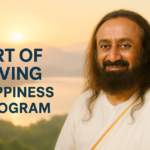When the Gods Speak Through Words
Hinduism, or Sanatana Dharma, isn’t just a religion. It’s a living, breathing philosophy — a way of life. Rooted in over 10,000 years of unbroken tradition, it speaks to us through mantras and shlokas, passed down through sages, scriptures, and temples.
These mantras are more than sounds. They are living vibrations — divine frequencies that guide our dharma (duty), karma (action), and moksha (liberation). Each mantra calls upon cosmic energies — from Lord Shiva’s transformative power to Maa Lakshmi’s abundance and Hanuman’s unshakable strength.
Let’s explore 21 powerful mantras that offer not just prayers — but life wisdom.

Hindu Mantras for Life Meaning Are :
1. Mahamrityunjaya Mantra – The Conqueror of Death
ॐ त्र्यम्बकं यजामहे सुगन्धिं पुष्टिवर्धनम्।
उर्वारुकमिव बन्धनान्मृत्योर्मुक्षीय माऽमृतात्॥
Meaning:
We worship the three-eyed Lord Shiva, who nourishes all beings. May He liberate us from the bondage of death, like a ripe cucumber from its stem, and lead us to immortality.
Life Lesson:
This mantra is not just for overcoming death, but for transcending fear, illness, and attachments. A spiritual rebirth.
2. Vakratunda Mahakaya – Ganesha Mantra
वक्रतुंड महाकाय सूर्यकोटि समप्रभ।
निर्विघ्नं कुरु मे देव सर्वकार्येषु सर्वदा॥
Meaning:
O Lord with a curved trunk and immense body, glowing like a million suns, remove all obstacles from my path — always.
Life Lesson:
A reminder to start everything with grace, with humility, and divine permission. Ganesha is the remover of inner and outer blocks.
3. Mangalam Bhagwan Vishnu – Vishnu Mantra
मङ्गलं भगवान् विष्णुः मङ्गलं गरुडध्वजः।
मङ्गलं पुण्डरीकाक्षः मङ्गलाय तनु हरिः॥
Meaning:
Auspicious is Lord Vishnu, who rides Garuda. Auspicious is the lotus-eyed one. May He bring us divine protection and joy.
Life Lesson:
Invoke Vishnu to preserve peace, balance, and dharmic living in your life and the world.
4. “Karmanye Vadhikaraste…” – Bhagavad Gita 2.47
कर्मण्येवाधिकारस्ते मा फलेषु कदाचन।
मा कर्मफलहेतुर्भूर्मा ते सङ्गोऽस्त्वकर्मणि॥
Meaning:
You have the right to perform your actions, but not to the fruits. Never get attached to the outcomes. And never abstain from your duties.
Life Lesson:
This is the essence of Karma Yoga. Do your duty with dedication and surrender the results to the Divine.
5. “Asato Maa Sad Gamaya…” – Brihadaranyaka Upanishad 1.3.28
असतो मा सद्गमय।
तमसो मा ज्योतिर्गमय।
मृत्योर्मा अमृतं गमय॥
Meaning:
Lead me from falsehood to truth, from darkness to light, from mortality to immortality.
Life Lesson:
A prayer that reminds us that life is a journey from ignorance to realization — from ego to eternal Self.
6. “Sarve Bhavantu Sukhinah…” – Universal Peace Mantra
सर्वे भवन्तु सुखिनः।
सर्वे सन्तु निरामयाः।
सर्वे भद्राणि पश्यन्तु।
मा कश्चिद्दुखभाग्भवेत्॥
Meaning:
May all be happy, may all be healthy, may all see good things, may none suffer.
Life Lesson:
This is universal compassion in mantra form. True Dharma lies in wishing good for all beings.
7. Hare Krishna Maha Mantra – The Bliss of Devotion
हरे कृष्ण हरे कृष्ण कृष्ण कृष्ण हरे हरे।
हरे राम हरे राम राम राम हरे हरे॥
Meaning:
O Lord Krishna and Rama, please engage me in your loving service.
Life Lesson:
This mantra brings divine bliss, humility, and breaks the cycle of material illusion. Chant for bhakti and inner peace.
8. Guru Mantra – The One Who Removes Darkness
गुरु ब्रह्मा गुरु विष्णु गुरु देवो महेश्वरः।
गुरुः साक्षात् परब्रह्म तस्मै श्रीगुरवे नमः॥
Meaning:
The Guru is Brahma, Vishnu, and Maheshwara — the Supreme God in human form. I bow to my Guru.
Life Lesson:
Without a Guru, spiritual evolution is incomplete. Find your guide, and surrender.
9. Saraswati Vandana – Goddess of Wisdom
या कुन्देन्दुतुषारहारधवला या शुभ्रवस्त्रावृता।
या वीणावरदण्डमण्डितकरा या श्वेतपद्मासना॥
Meaning:
I bow to Goddess Saraswati, fair as a white lotus, dressed in pure white, seated on a swan, holding the veena.
Life Lesson:
Invoke her before learning, speaking, or teaching. She is the embodiment of divine knowledge and clarity.
10. Shri Lakshmi Ashtakam (Opening Verse)
नमस्तेऽस्तु महामाये श्रीपीठे सुरपूजिते।
शङ्खचक्रगदाहस्ते महालक्ष्मि नमोऽस्तु ते॥
Meaning:
Salutations to Mahalakshmi, who is worshipped by the gods, and who holds the conch, disc, and mace.
Life Lesson:
True abundance isn’t just wealth — it is health, happiness, and contentment. Lakshmi blesses holistic prosperity.
11. “Ya Devi Sarva Bhuteshu…” – Durga Saptashati
या देवी सर्वभूतेषु शक्तिरूपेण संस्थिता।
नमस्तस्यै नमस्तस्यै नमस्तस्यै नमो नमः॥
Meaning:
To the Devi who resides in all beings as power, we bow again and again.
Life Lesson:
The Divine Mother is within everyone — as strength, love, and protection.
16. “Gayatri Mantra – Rig Veda 3.62.10”
ॐ भूर्भुवः स्वः।
तत्सवितुर्वरेण्यं।
भर्गो देवस्य धीमहि।
धियो यो नः प्रचोदयात्॥
Meaning:
We meditate upon the Divine light that awakens our intellect and inner consciousness.
Life Lesson:
The most sacred Vedic mantra — invoking divine illumination of the mind and soul.
17. “Yatra Yogeshwarah Krishna…” – Bhagavad Gita 18.78
यत्र योगेश्वरः कृष्णो यत्र पार्थो धनुर्धरः।
तत्र श्रीविजयो भूतिर्ध्रुवा नीतिर्मतिर्मम॥
Meaning:
Where Krishna (consciousness) and Arjuna (effort) are united, victory is assured.
Life Lesson:
When spiritual guidance and righteous action go together, success follows.
18. “Aham Brahmasmi” – Brihadaranyaka Upanishad
अहं ब्रह्मास्मि।
Meaning:
I am Brahman — the Infinite.
Life Lesson:
This is liberation — to see that the Divine isn’t outside, but within.
19. Hanuman Chalisa (Opening Verse)
श्रीगुरु चरन सरोज रज, निज मनु मुकुरु सुधारि।
बरनऊँ रघुबर बिमल जसु, जो दायकु फल चारि॥
Meaning:
I cleanse the mirror of my mind with the dust of my Guru’s feet and sing the praises of Lord Ram’s beloved Hanuman.
Life Lesson:
The Hanuman Chalisa is a shield — read it daily for mental strength and divine discipline.
20. “Tvameva Mata…” – Prayer of Surrender
त्वमेव माता च पिता त्वमेव।
त्वमेव बन्धुश्च सखा त्वमेव।
Meaning:
You alone are my mother, father, friend, companion, and all.
Life Lesson:
Ultimate surrender to the Divine — where we see God in every relationship and role.
21. “Shivoham” – Nirvana Shatakam by Adi Shankaracharya
चिदानन्द रूपः शिवोऽहम् शिवोऽहम्।
Meaning:
I am pure consciousness and bliss. I am Shiva.
Life Lesson:
A mantra of liberation from identity — reminding us that we are not the mind, senses, or body — but the Self.
Hindu Mantras for Life Meaning Conclusion: These Are Not Just Words — They Are Life
The mantras of Sanatana Dharma are not for just ritualistic chanting. They are a spiritual map — taking us from ignorance to realization, fear to fearlessness, ego to enlightenment.
So chant with your heart, reflect with your soul, and live each mantra — because the Gods are always listening.
Hindu Mantras for Life Meaning : Frequently Asked Questions (FAQ)
Q. What is the purpose of chanting mantras in Hinduism?
Answer:
In Hinduism, mantras are sacred syllables or phrases believed to carry divine vibration. Chanting mantras aligns the body, mind, and soul with cosmic energy. They help in meditation, healing, spiritual growth, and manifesting inner peace. Each mantra is uniquely powerful and serves specific purposes like protection, health, wisdom, and abundance.
Q. How do Hindu mantras teach the meaning of life?
Answer:
Mantras like “Karmanye Vadhikaraste” from the Bhagavad Gita teach us to focus on action without attachment to results. Others like “Asato Ma Sad Gamaya” guide us from illusion to truth. These mantras hold deep philosophical insights that inspire a life of dharma (righteousness), compassion, awareness, and liberation.
Q. Is it necessary to understand the meaning of a mantra while chanting?
Answer:
While the vibrational power of Sanskrit is effective regardless, understanding the meaning enhances the emotional connection and intention behind the chant. It allows the seeker to internalize the lesson and live by its principles, not just repeat syllables mechanically.
Q. Can anyone chant Hindu mantras or do I need to be a Hindu?
Answer:
Absolutely. Hinduism is inclusive and universal. Anyone with pure intention can chant these mantras. Many non-Hindus across the world chant mantras like the Gayatri Mantra, Maha Mrityunjaya Mantra, and Shanti Mantras for mental peace and spiritual connection.
Q. Which mantra is best for overcoming fear or health issues?
Answer:
The Maha Mrityunjaya Mantra dedicated to Lord Shiva is known for healing, rejuvenation, and protection from untimely death. It is often chanted during illness, surgery, or difficult transitions in life. It is referred to as the “death-conquering” mantra.
Q. What is the most powerful mantra in Hinduism?
Answer:
Different mantras serve different purposes. However, the Gayatri Mantra and Maha Mrityunjaya Mantra are among the most revered and universally powerful. The “Om” syllable itself is considered the primordial sound of the universe and the essence of all mantras.
Q. How many times should I chant a mantra?
Answer:
Traditionally, mantras are chanted 108 times using a mala (rosary), but even 11 or 21 repetitions done mindfully can be effective. What’s more important is consistency, devotion, and mental presence, not just numbers.
Q. Is there a specific time of day for chanting mantras?
Answer:
Yes, early morning (Brahma Muhurta – 4 to 6 AM) and evening are considered the most spiritually potent times for chanting. However, mantras can be chanted anytime with a pure heart — even during travel, meditation, or work breaks.
Q. Do mantras work if chanted silently?
Answer:
Yes. Mantras can be chanted loudly, silently, or mentally. Mental chanting (known as Manasik Japa) is considered highly effective, especially when the mind is calm and focused. The energy and devotion behind the chant matter most.
Q. Which mantra is best for daily life inspiration?
Answer:
The Bhagavad Gita verse —
“Karmanye Vadhikaraste, Ma Phaleshu Kadachana…” —
teaches us to act with sincerity and not get attached to outcomes. It is one of the greatest life lessons from Hindu scripture, perfect for grounding oneself in everyday challenges.
Q. Can I listen to recorded mantras instead of chanting?
Answer:
Yes. Listening to recorded mantras — especially when chanted by authentic spiritual masters — can bring peace, clarity, and spiritual upliftment. However, actively chanting yourself adds a layer of personal transformation and deeper connection.
Q. Are there mantras for children, students, or learning?
Answer:
Yes. Saraswati Mantras are especially helpful for students, artists, and knowledge seekers. The popular one is:
“ॐ ऐं सरस्वत्यै नमः” (Om Aim Saraswatyai Namah)
Chanting this improves concentration, memory, creativity, and clarity of speech.
Q. Are these mantras mentioned in the Vedas or other scriptures?
Answer:
Yes. Most mantras listed in the blog are taken from Vedas, Upanishads, Bhagavad Gita, Puranas, and devotional texts like Hanuman Chalisa, Durga Saptashati, or Shiv Mahimna Stotra. They have been time-tested and preserved through oral and written tradition for centuries.
Q. Can mantras help with mental health and stress?
Answer:
Absolutely. Mantras create vibrational healing, regulate breathing, and help calm the nervous system. Regular chanting reduces anxiety, improves focus, and elevates mood — often recommended alongside meditation and yoga in spiritual therapy.
Q. What is the difference between a mantra and a shloka?
Answer:
- A mantra is a short, sacred sound or phrase with spiritual potency, used for japa (repetition) and energy activation.
- A shloka is a longer verse, typically from a scriptural text, conveying philosophical or moral wisdom.
Both are integral to Sanatana Dharma.
Q. Can I make my own personal mantra?
Answer:
You can chant any mantra that resonates with your heart and goals, but traditional mantras carry encoded spiritual energy and are best passed down through scriptures or gurus. Creating affirmations in your own language can complement your mantra practice.
Q. Is chanting enough, or should I live by the mantra?
Answer:
Chanting is just the beginning. The real power of a mantra lies in living its truth. For example, chanting about peace is incomplete without practicing kindness. Mantras should be mirrored in your actions, thoughts, and values.
You May Also Like :
- Mudras for Modern Life
- Sadhguru’s Samyama Sadhana Meditation Slows Brain Aging
- Top 15 Spiritual Places in India Every Hindu Must Visit at Least Once
- Top 10 Mysterious and Magical Temples in India
- Top 10 Temples in South India
- 13 Jyotirlingas of Lord Shiva
Disclaimer:
This blog post is written with deep respect and devotion toward Sanatana Dharma and Hindu beliefs. The mantras, shlokas, and interpretations shared here are based on widely accepted texts and traditional understandings. Readers are encouraged to consult spiritual guides or scriptures for deeper study.
This content is for educational and devotional purposes only. We do not claim to replace religious counsel or individual faith practices.

Hi, I’m Prashant Jain — a curious soul, storyteller, and content creator at heart.I’ve always been drawn to the world of entertainment, travel, sports, health & lifestyle — not just as a writer, but as someone who genuinely lives these experiences. Whether I’m binge-watching the latest OTT series, exploring offbeat spiritual destinations in India, or diving deep into wellness routines and cricket match insights, I love sharing what I discover with like-minded readers.
PopNewsBlend is my way of blending personal journeys with meaningful stories — ones that inform, inspire, and keep you ahead of the curve. Everything I write comes from real observations, hands-on experiences, and a deep passion for understanding the world around us.
Discover more from Popnewsblend
Subscribe to get the latest posts sent to your email.







